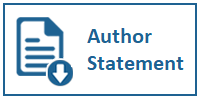Prewedding Location Selection Recommendation System using Count Vectorization and Cosine Similarity
DOI:
https://doi.org/10.31937/ti.v17i1.4050Abstract
Choosing the right pre-wedding location is a concern for many couples due to the many options available, which often causes confusion and is time-consuming in decision-making. Therefore, a recommendation system is needed to assist couples in determining the prewedding location that suits their preferences. This research aims to provide alternative recommendations for prewedding locations and simplify the process of selecting a suitable location. This system integrates the content-based filtering method by applying count vectorization and cosine similarity calculations to calculate and measure the level of similarity between locations based on features in the dataset when producing prewedding location recommendations. The Rapid Throwaway Prototyping method ensures the system development is done iteratively and involves direct feedback from users. The recommendation system is evaluated using the Mean Reciprocal Rank (MRR) metric to measure the effectiveness of the recommendations provided by the system. The results show that the developed prewedding location recommendation system can provide relevant location recommendations with good performance, as evidenced by the Mean Reciprocal Rank (MRR) value of 0.88, which indicates that the system is effective in placing the most relevant locations at the top of the recommendation list. The high MRR value shows the system's effectiveness in providing relevant recommendations, improving customer experience, and supporting the company's competitiveness in the prewedding documentation industry.
Downloads
Additional Files
Published
How to Cite
Issue
Section
License
Copyright (c) 2025 Dede Kurniadi, Ilham Ahmad Maulana

This work is licensed under a Creative Commons Attribution-ShareAlike 4.0 International License.
Authors retain copyright and grant the journal right of first publication with the work simultaneously licensed under a Creative Commons Attribution-ShareAlike International License (CC-BY-SA 4.0) that allows others to share the work with an acknowledgement of the work's authorship and initial publication in this journal.
Authors are able to enter into separate, additional contractual arrangements for the non-exclusive distribution of the journal's published version of the work (e.g., post it to an institutional repository or publish it in a book), with an acknowledgement of its initial publication in this journal.
Copyright without Restrictions
The journal allows the author(s) to hold the copyright without restrictions and will retain publishing rights without restrictions.
The submitted papers are assumed to contain no proprietary material unprotected by patent or patent application; responsibility for technical content and for protection of proprietary material rests solely with the author(s) and their organizations and is not the responsibility of the ULTIMATICS or its Editorial Staff. The main (first/corresponding) author is responsible for ensuring that the article has been seen and approved by all the other authors. It is the responsibility of the author to obtain all necessary copyright release permissions for the use of any copyrighted materials in the manuscript prior to the submission.















